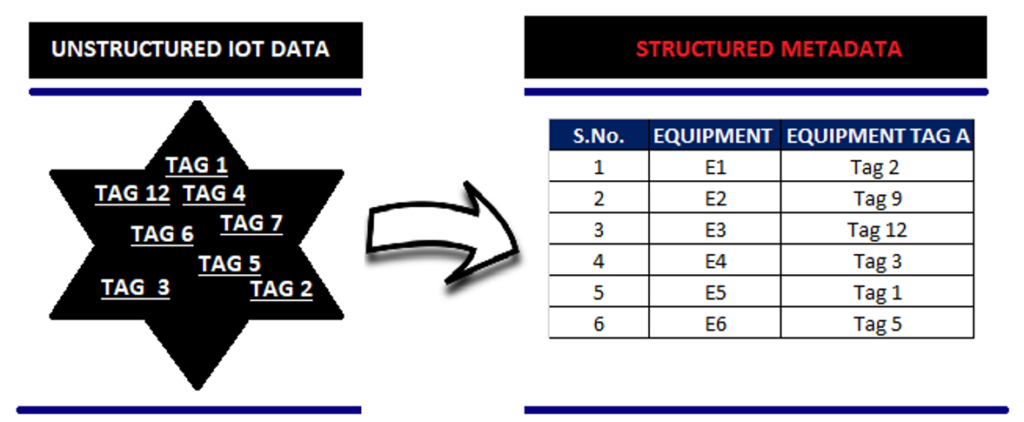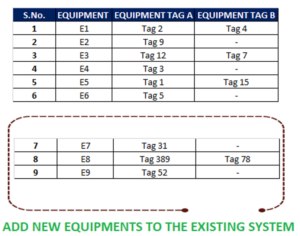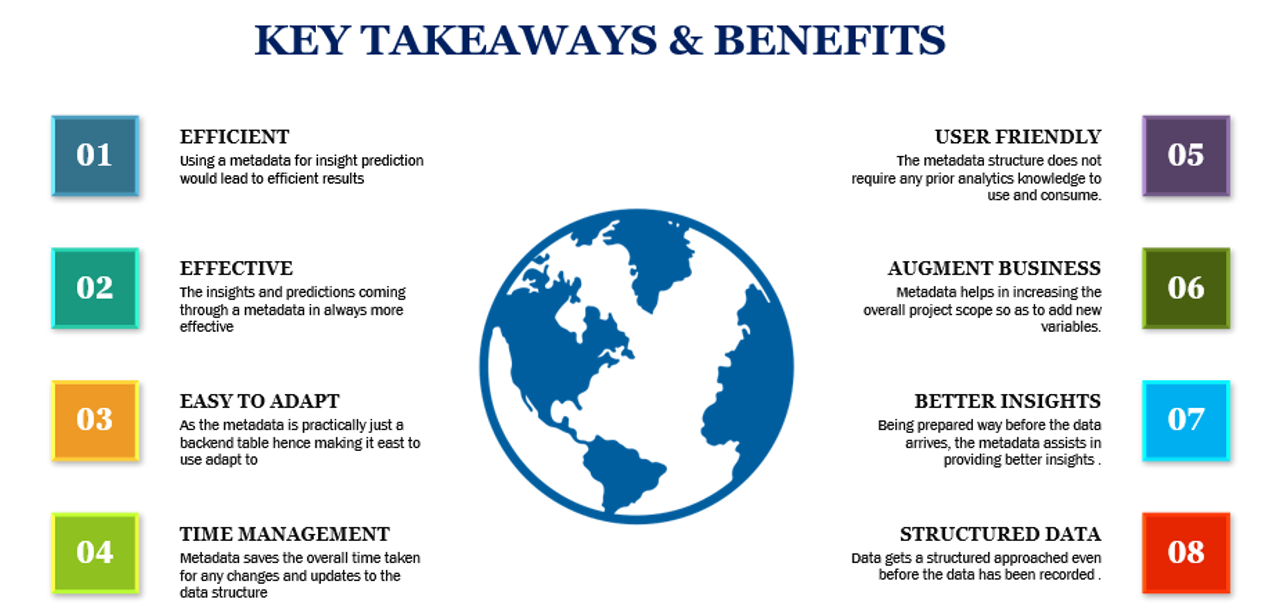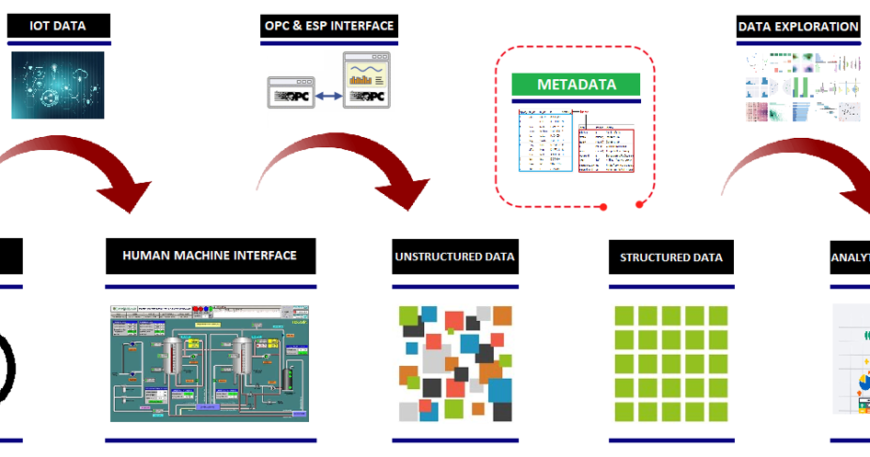BACKGROUND:
Analytics of Internet of Things (IoT) is a need for today. Still, being a fairly new addition to the technological world, it faces its own set of challenges due to a major gap in structuring the data in the format which could be ideal for any type of analytics or insight preparation.
In this blog, we will focus on the need to create a backend structure to efficiently manage the IoT data depicting the nature of the equipment.
Every IoT sensor has a unique address linked to it which we will call a “TAG”. There are certain sets of tags that need to be identified before beginning with any data wrangling exercise, but what analyst neglects are the need to create metadata for successfully mapping all the tags to get an effective data structure to perform analytics.
If successfully mapped, “Metadata” works as a bridge between the data recorded over a Human Machine Interface (HMI) and the structured data needed to even begin with any kind of data exploration exercise.
Below are some of the major impacts that effective IoT Metadata would have on the overall project efficiency-
DEVISE MODEL DECISIONS BEFORE THE DATA IS RECEIVED
After gaining a deep understanding of the business requirements and the type of data needed for the same, an analyst can create a backend data structure, and instead of waiting for the IoT “TAG” data, one can easily create a structure that could be successfully consumed towards data exploration and analytics.
This way, the team could begin preparing their data models and visualization structures without waiting for the data as the only thing that would be left will be the Exploratory Data Analysis as the data would come structured.

EFFECTIVE DATA HANDLING
The data read from HMIs through data access servers is mapped across unique tags. Once an analyst receives the irregular tag data, they try to read and structure the data through complex modeling algorithms which creates both confusion and delay in delivery.
A backend metadata structure can be used to represent the tags across all the equipments in a data structure that is easily understandable and insight efficient. This way, an analyst can easily handle data for multiple units and equipment by mapping the tags across apparatuses over metadata.

MAKE EDITS AND UPDATES TO THE DATA STRUCTURE
Suppose there is a change in an equipment tag due to some human error!
Now, if the team has created a model wherein, they have also structured the raw data within the source code, then they will have to go back to the part of the code where they have manually arranged the tags and make changes from there. This will make the overall project susceptible to changes as the process to make tag changes would be both – time taking and vulnerable to source code failure.
Metadata can handle any tag changes with grace as it would just require the team to change the name of the unique tag associated with the error equipment and the modifications would be managed in no time and without tampering the source code.

AUGMENT THE PROJECT AND ADD MORE EQUIPMENT’S
The project has been delivered, the client loves the insights and wants to add more equipments to cover a larger area under the model. Now, if the tags have been structured in the source code, then adding a whole new equipment would be a nightmare for the team as they will have to add the equipment’s by making amends to the source code which will again make the project exposed to errors and delays due to redevelopment hence increasing the overall operational cost of the project.
A backed metadata can profusely handle equipment and tags addition as the only changes that need to be made are at the metadata structure level hence minimizing the costs while also improving productivity.


For more information, please contact us – info@nupeak.in




